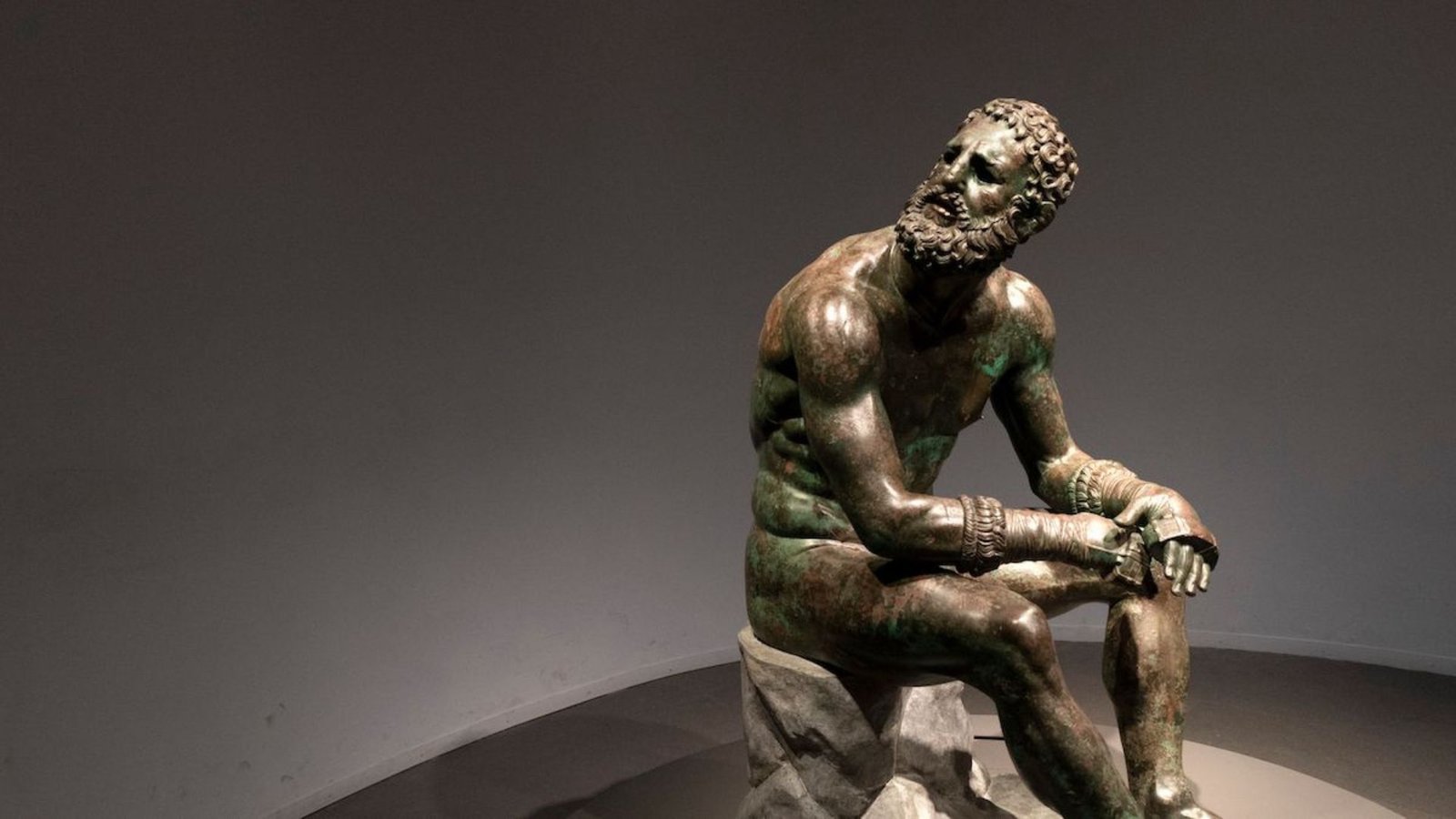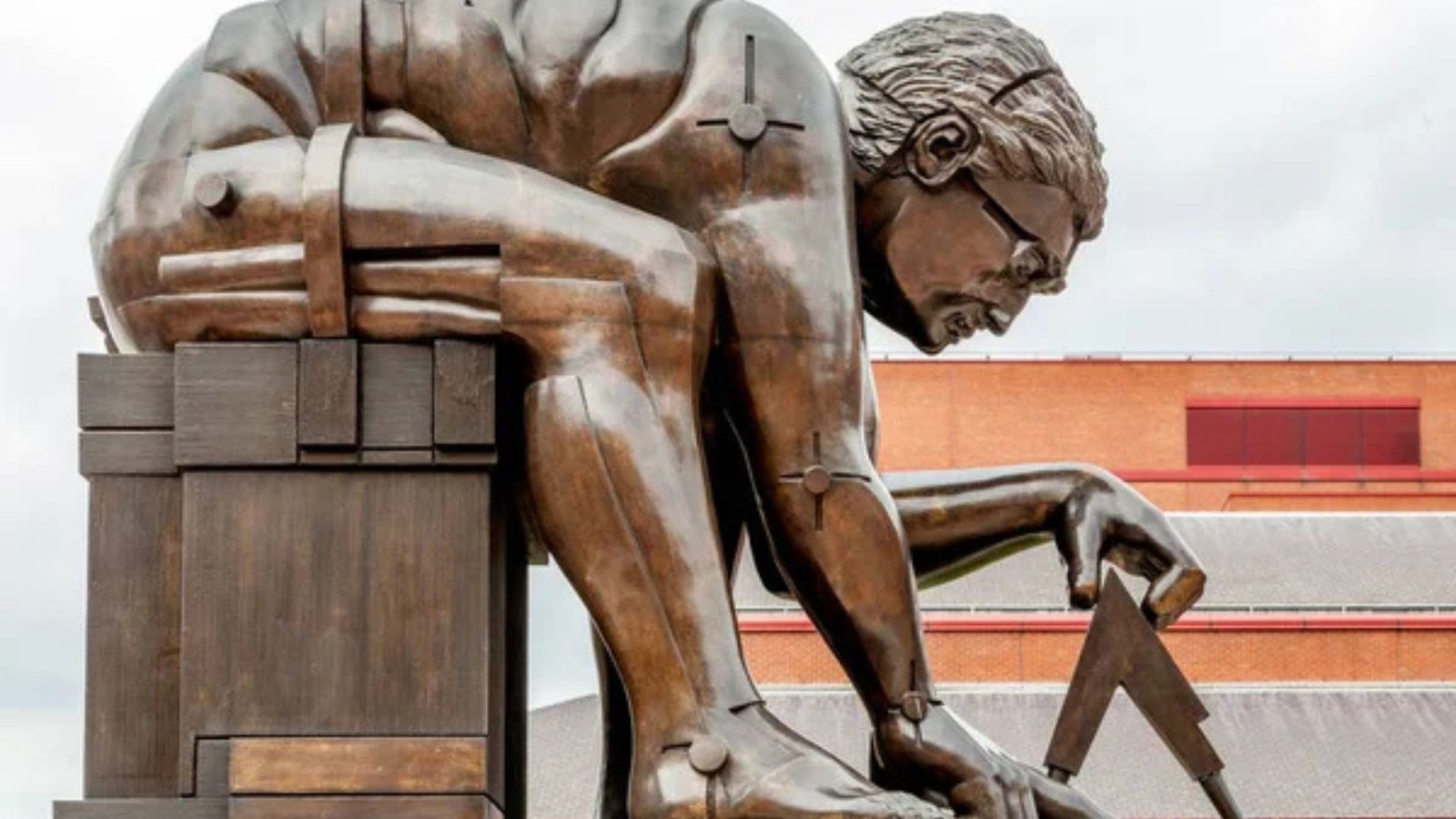
Bronze sculptures have been an essential part of art history for centuries. Their strength and ability to capture emotion make them timeless pieces. From ancient masterpieces to modern works, famous bronze sculptures continue to inspire people all over the world. In this post, we’ll explore the most famous bronze sculptures you should know about and their significance.
1. “The Thinker” by Auguste Rodin
One of the most famous bronze sculptures in the world is “The Thinker” by Auguste Rodin. Originally conceived in 1880, this sculpture became a symbol of deep contemplation. It shows a man sitting, with his chin resting on his hand, deep in thought.
Why It’s Famous:
- Symbolism of Thought: “The Thinker” is widely seen as a symbol of intellectual activity and human reflection. It captures the process of deep thinking and is a powerful representation of humanity.
- Influence on Art: Rodin’s work broke with traditional ideals and showed raw human emotion, which influenced many modern artists.
- Where to See It: The original version is in the Musée Rodin in Paris, with several copies in various museums worldwide.
2. “David” by Donatello
Donatello’s “David” (1440) is one of the first freestanding nude sculptures since antiquity. It shows the biblical hero David after defeating Goliath, but it’s Donatello’s innovative approach that makes this sculpture stand out.
Why It’s Famous:
- First Nude Statue: Donatello’s “David” was groundbreaking because it was the first large bronze sculpture of a nude male figure in the Renaissance.
- Symbol of Strength: The statue highlights both physical and mental strength, capturing David’s victory over Goliath.
- Where to See It: You can view Donatello’s bronze “David” at the Museo Nazionale del Bargello in Florence, Italy.
3. “The Burghers of Calais” by Auguste Rodin
Rodin’s “The Burghers of Calais” (1884-1889) is another iconic bronze sculpture. It commemorates the self-sacrifice of six men during the Hundred Years’ War, who volunteered to be executed to save their city.
Why It’s Famous:
- Powerful Emotion: The sculpture shows the deep despair and sacrifice of the burghers. Each figure is unique, with expressive details that show human vulnerability.
- Humanism: Rodin focused on realistic, emotional representations of people rather than idealized figures, which made this piece revolutionary in its time.
- Where to See It: The “Burghers of Calais” is displayed in the Musée Rodin in Paris and other locations worldwide.
4. “Equestrian Statue of Marcus Aurelius”
The “Equestrian Statue of Marcus Aurelius” dates back to 175 AD. It represents the Roman Emperor Marcus Aurelius on horseback and is one of the few surviving bronze statues from ancient Rome.
Why It’s Famous:
- Roman Power: The sculpture symbolizes imperial strength, with Marcus Aurelius shown in a commanding position. The horse’s calm demeanor contrasts with the emperor’s power.
- Historical Importance: It is a rare example of a Roman bronze statue that has survived for over 1,800 years.
- Where to See It: This piece is located in the Capitoline Museums in Rome, Italy.
5. “The Little Mermaid” by Edvard Eriksen
Though originally made in stone, Edvard Eriksen’s “The Little Mermaid” was later cast in bronze to preserve the sculpture. The piece is based on the fairy tale by Hans Christian Andersen and has become an iconic symbol of Copenhagen.
Why It’s Famous:
- Symbol of Denmark: The “Little Mermaid” is a national symbol of Denmark and is one of the most photographed statues in the world.
- Literary Influence: The statue’s inspiration comes from Andersen’s story of love, sacrifice, and unrequited affection.
- Where to See It: You can see “The Little Mermaid” in Copenhagen, Denmark, at Langelinie Pier.
6. “Man with a Broken Nose” by Pablo Picasso
Pablo Picasso’s “Man with a Broken Nose” (1905) is a striking early bronze bust that reflects his unique approach to modernist sculpture. This piece shows Picasso’s exploration of form and abstraction.
Why It’s Famous:
- Abstract Form: Picasso’s work was a departure from traditional realism, and “Man with a Broken Nose” captures the raw emotions of the subject with bold lines and shapes.
- Early Work: This piece was created during Picasso’s “Rose Period,” before he became famous for Cubism, making it an important early work in his career.
- Where to See It: The sculpture is part of the permanent collection at the Picasso Museum in Paris.
7. “The Discus Thrower” by Myron
“The Discus Thrower” (Discobolus) by the ancient Greek sculptor Myron is one of the most famous representations of athleticism in art. Though the original has been lost, many Roman copies in bronze exist today.
Why It’s Famous:
- Celebration of the Human Body: This sculpture idealizes the human form, showcasing strength, motion, and grace in athletics.
- Greek Art Innovation: Myron’s “Discus Thrower” demonstrates the classical Greek ideal of harmony and balance in the human body.
- Where to See It: You can see a Roman copy of “The Discus Thrower” in the British Museum in London.
8. “The Fallen Caryatid” by Jean-Baptiste Carpeaux
Jean-Baptiste Carpeaux’s “The Fallen Caryatid” (1873) is a dramatic bronze sculpture showing a female caryatid, or architectural support figure, who has collapsed under the weight of a column.
Why It’s Famous:
- Emotional Intensity: The caryatid’s expression of exhaustion and despair contrasts with the usual portrayal of these figures in classical architecture.
- Movement and Drama: Carpeaux’s work highlights the weight and burden of responsibility, making it an emotionally charged piece.
- Where to See It: The “Fallen Caryatid” is housed in the Musée d’Orsay in Paris.
9. “The Kiss” by Constantin Brâncuși
Constantin Brâncuși’s “The Kiss” (1907-1908) is a masterpiece of modernist sculpture. It shows two figures locked in an intimate embrace, simplified into smooth, abstract shapes.
Why It’s Famous:
- Minimalist Style: Brâncuși’s work focuses on essential forms, reducing the figures to their most basic elements. This sculpture is a prime example of modernist abstraction.
- Symbolism of Love: “The Kiss” represents the universal emotion of love, transcending individual identities to focus on the connection between two beings.
- Where to See It: You can find “The Kiss” in the Musée National d’Art Moderne in Paris.
10. “The Warrior” by Riace
The “Riace Warriors” (c. 460 BC) are two full-scale bronze statues that were discovered in the sea off Riace, Italy, in 1972. These ancient Greek statues are masterpieces of classical sculpture.
Why They’re Famous:
- Realistic Detail: The warriors are incredibly detailed, capturing the muscles, expressions, and movement of real people. They show an idealized version of the human form.
- Historical Significance: These statues are among the finest examples of Greek bronze sculpture that have survived from antiquity.
Conclusion
From ancient Greek masterpieces to modern expressions of love and power, these famous bronze sculptures have stood the test of time. Whether you’re an art collector, enthusiast, or simply curious, these iconic works continue to influence and inspire. Each one tells a story, captures a moment in history, and reflects the enduring power of bronze as a medium. If you ever have the chance, seeing these sculptures in person will leave you in awe of their beauty and significance.











